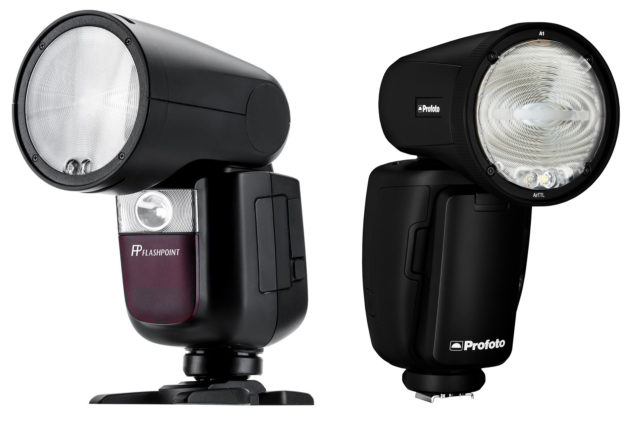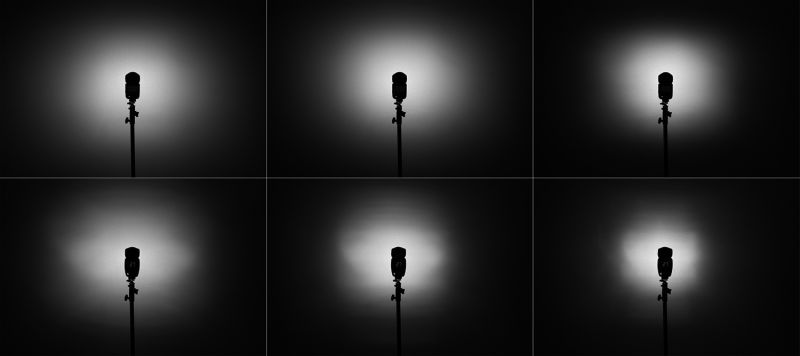Chinese lighting manufacturer, Godox, has denied claims by Profoto that its new V1 round-head flash is a rip off of the Swedish-designed A1.

Godox unveiled the V1 at Photokina 2018, with DPreview reporting it as ‘designed to compete with the Profoto A1’.
The V1 looks and operates like the A1, with the same maximum light output, HSS, TTL, recycle time, magnetic modifiers, and a switch lock.
As is the case with most so-called ‘Chinese imitations’, affordability makes the V1 extremely attractive and a threat to Profoto’s market share.
The V1 costs US$259 on Adorama whereas the Profoto A1 is US$995.
Profoto threatened to sue Godox for patent infringement in March, but the seven patents are still pending, preventing legal action for now.
‘This is an important matter of principle. We have been copied before and sometimes we have acted and sometimes let it be, but we have never seen such a blatant copy before,’ Profoto CEO Anders Hedebark told Fotosidan, via a poor Google Translation. ‘We are a Swedish company that hires Swedish engineers. It feels like we have an obligation to act.’
Profoto directly contacted some Godox dealers, discouraging them from selling the V1 by claiming the product is a rip-off. This approach is akin to Zeiss strong-arming Europe’s Samyang distributor into recalling two Premium XP ‘rip-off’ lenses last year.
Godox has now responded by sending a ‘strictly confidential’ letter to resellers refuting the accusations made by Profoto.
‘We are extremely disappointed that Profoto reached out to our dealers rather than deal directly with us. It is our opinion that they have done so with the intent to cause harm to our dealer relationships,’ the letter, obtained by Petapixel, says. …’we have not provided any copies of any patent applications. Even so, Profoto has no legal rights until their patents issue. It may be that their patent applications are not entitled to any patent protection. Hence, Profoto’s only motive is to harm our dealers.’
Kayell, an Australian Godox distributor, declined to comment on the matter.
Godox says the V1 came after ‘independent research and development’ that’s not based on any Profoto products.
Chinese manufacturers have a reputation for reverse engineering products by established brands, which puts pressure on market leaders and threatens innovation.
British lighting company, Bowens, partly blamed cheap Chinese knock-offs for sending it into liquidation in 2017 – although increased innovation from competitors like Profoto was also acknowledged.
US trigger manufacturer, PocketWizard, experienced poor sales that led to a major layoff in 2014 attributed to increased ‘global competition’ from the likes of Yongnuo. Four Chinese triggers cost $120 back then, while just one from PocketWizard was more than double.
Overpriced for innovation?
The A1 took four years to develop. Profoto says it invests 10 percent of sales into product development, which Hedebark points out is critical for innovation.
‘We spend a lot of time and money on development and will protect our investments. In addition to marketing, we also put resources into developing the market. We have not only ripped the way for Godox, but plowed and paved and plastered with toothbrush so that it is smooth for them,’ says a poorly-translated Hedebark.
It’s a similar defence penned by Danny Lenihan, CEO of innovative British-based tripod manufacturer 3 Legged Thing.
‘Every time a cheap copy is purchased, pressure mounts on manufacturers to produce goods for less money, and make them more widely appealing and competitive. Product quality slips as the price goes down. Then the copies start coming down in price, until it gets to the point when stores don’t want to stock it any more, because they can no longer sell it competitively, and manufacturers don’t want to make it anymore, because it’s no longer economically or commercially viable.
Then, investment into innovation stops, and as new cameras are developed, there’s nobody around to make supporting accessories, because nobody wants to sink $100k of investment into a product that’ll be ripped off in five minutes. Once that happens, it’s all over. The industry gets smaller, less jobs, less profit and less products. It should be obvious to see what happens next. And it’s not just about photography. This is happening everywhere.’ Read the article here.
Like many other established Chinese manufacturers, Godox started out as an obscure knock-off brand but has since converted many photographers and built a solid reputation.
With the Profoto A1 costing four times more than the V1, it’s reasonable to expect it outperforms the Godox. That doesn’t appear to be the case.
Gear review website, SLR Lounge, ran a blind test of the V1 and A1 and 89 percent of readers prefer the V1 light pattern. Likewise on Petapixel, 93 percent (889 votes) prefer the Godox.

As for durability, it’s reasonable to expect the Godox is made from cheaper materials than the Profoto. But this has yet to be proven.





Be First to Comment